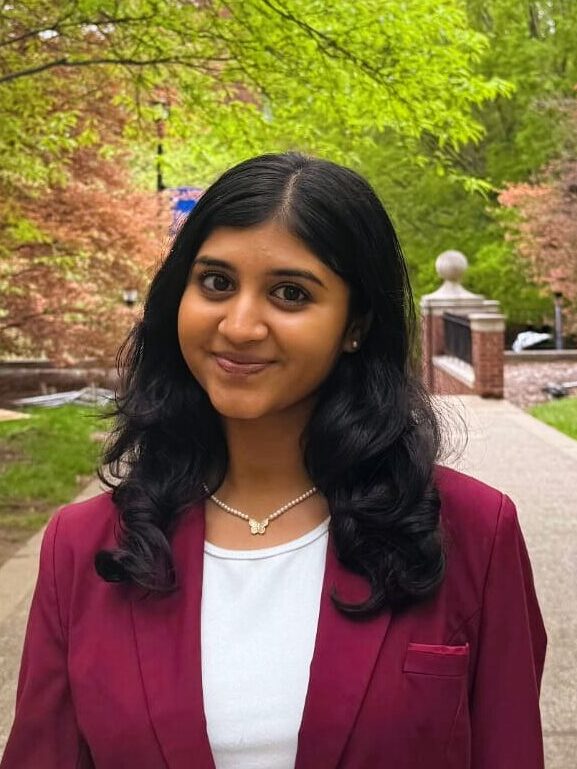
By Sahana Srikanth, Youth Advisory Council member.
The following reflects Sahana’s lived experiences, thoughts, and opinions.
On May 22, 2025, the White House released its sweeping MAHA Report, led by Department of Health and Human Services Secretary Robert F. Kennedy Jr. The Report intended to focus on drivers behind the rise in childhood chronic disease [1]. Yet, a closer look at this official White House document revealed that of the Report’s 522 footnotes of scientific research, around 37 were repeated, seven were for nonexistent studies, and dozens contained broken links and missing authors [2].
One would think that the Federal Government’s informational release to 340 million Americans would be slightly more fact-checked. Unfortunately not. And perhaps even more alarmingly, such footnote errors aren’t the only problem within the Report. Several researchers cited in the report noted that it consistently distorted and misinterpreted their work. For example, Dr. Mariana Figueiro stated that MAHA stretched her study’s results into false conclusions about screen time and sleep. At the same time, epidemiologist Katherine Keyes said she was cited as the author of a paper she never wrote [3]. Interestingly, MAHA references even included the term “oaicite” attached to URLs, proving that the research was assembled with AI.
This controversy reflects a broader turning point in the field of health literacy. Health misinformation is no longer limited to conspiracy groups, because even governments are blurring fact and fiction by relying on artificial sources of truth to disseminate science. Social media platforms, which no longer regulate false claims, and easy-to-use AI tools make spreading misinformation effortless, leaving young people extremely vulnerable to lies diffused online [4].
My interest in this subject emerged during the pandemic, compounded by the effects of living in a digital generation. Witnessing how social media misinformation infected my regional communities during the COVID-19 pandemic shocked me, as I didn’t realize that false online communication could have dangerous – even deadly – impacts. According to the head of the Food and Drug Administration, Dr. Robert Califf, medical misinformation is taking lives – especially among disadvantaged populations. Additionally, seeing the effects of ChatGPT on my peers’ perception of the truth has shown me AI’s consequences in an academic setting. I’ve found that student reliance on AI as a replacement for credible sources has threatened their ability to distinguish fact from fiction. Simply put, there is a reason numerous NGOs warn that AI should not be relied upon for 100% truthful or accurate information.
Without preventive action (especially for youth), this problem is reaching dangerous heights. Nearly all U.S. adults (96%) report hearing health misinformation, and 86% of physicians say patient perceptions of misinformation have risen sharply in recent years [5][6]. When families misunderstand true science, doctors struggle to provide adequate, evidence-based care.
The stakes of this phenomenon are real. In August 2025, a gunman attacked the CDC headquarters in Atlanta, blaming his poor mental health on COVID-19 vaccines [7]. Vaccine hesitancy and vaccine rejection are public health crises on their own, and now violence is becoming a severe consequence of such scientific misconceptions.
For teens growing up online, the inability to separate credible sources from persuasive falsehoods will only fuel mistrust, anger, and confusion as they progress. Left unaddressed, health misinformation will only sentence society to further epidemics, gun violence, and mental health crises.
Thankfully, there is a solution. Stanford University Professor Sam Wineburg recommends that schools bridge this misinformation gap [8] by fostering early environments where kids learn to value science and ask questions about their health. Schools are uniquely positioned to do this, as they are trusted spaces, reach diverse youth populations, and coincide with a critical stage of abstract thinking development [9].
So, how do schools do this?
Traditional health curriculums often omit digital or media literacy and focus heavily on pure science, such as biology and geology. Because modern health challenges require a critical evaluation of raw scientific content and the digital platforms delivering it, schools should emphasize technological health literacy more.
First, students must learn which sources of health information are trustworthy. NIH and CDC websites are reliable starting points, as are (generally) most federal government agency-sponsored sites. However, in 2025, even these government sources should be cross-checked with independent organizations. For instance, medical schools (Harvard, Yale, Stanford) often offer health blogs with credible insights from esteemed professors. Large professional or nonprofit organizations, like the American College of Cardiology and the American Heart Association, are also reliable sources of information on individual health [10].
Second, students should learn to spot red flags of health misinformation online. This can include sensational headlines, absolute claims, emotional appeals, and celebrity endorsements [11]. Usually, when the organization tries to scare you or make you buy a product, the article’s objectivity should be questioned.
Third, teachers should instruct youth to analyze how information is selected and reviewed to ensure accuracy. This means showing youth how to check a site’s “About Us” page to see if the organization has an editorial board of health experts, doctors on the panel of authors, a content review process, a highly selective content policy, or ads to fuel content. By analyzing these factors, students will become more well-informed about interpreting the information around them – preparing youth to make healthy choices about their life and the content they consume. Schools can easily cultivate a generation of health-literate youth by taking small steps, such as integrating pre-existing Health Literacy Modules into student learning in core classes.
Another way to address the growing need for greater health literacy programming in U.S. schools is by leveraging the power of school-based health centers (SBHCs). School-based interventions for health literacy [10] actually show promise for improving health literacy among certain demographics, such as rural children. Personal health literacy education allows youth to grow up with an internal weighing system to adequately deal with fake news and false information, boosting the chances they make well-informed decisions in the future [11].
An example of this in implementation is having SBHCs provide health literacy informational booklets or pamphlets to students K-12 who visit an SBHC for a specific health purpose. Another idea is for SBHC staff to work with a school’s health faculty to develop programs and curriculum surrounding health misinformation. This could look like promoting National Public Health Week with fun activities for youth to engage in that teach them about health literacy. SBHCs can also include modules and resources in their newsletter and on their website so families can converse with students about these subjects at home.
There are various model programs SBHCs can utilize as references to curate their internal programming. One example is the River Valley Healthy Communities Coalition (RVHCC) Health Information Literacy Outreach Project, which developed a health information literacy curriculum piloted by educators in Maine. The curriculum included lessons on finding health information online, evaluating information reliability, and using the information to learn about personal health. Programs such as these ensure that every student who completes the curriculum is equipped with the tools to protect themselves against dangerous misinformation, while also serving as ambassadors for the truth in their community.
A generation growing up online cannot afford to be passive information consumers. So, schools must take a leadership role by embedding health misinformation education into curricula. By aspiring to create a generation of health-literate youth, schools can advance population health, promote a well-informed society, and revitalize necessary trust in science. Ultimately, health misinformation is more than a digital nuisance – it’s a public health crisis. Thus, a better-informed generation can stop this misinformation at its roots, protecting youth, families, and communities alike.
- MAHA Commission report paints a dark picture of U.S. children’s health
- MAHA report on chronic disease in US kids includes fake citations, other errors
- Trump officials downplay fake citations in high-profile report on children’s health | Science
- Meta to replace ‘biased’ fact-checkers with moderation by users
- https://ballardbrief.byu.edu/issue-briefs/the-effects-of-medical-misinformation-on-the-american-public
- Medical misinformation on the rise: 7 notes – Becker’s Hospital Review | Healthcare News & Analysis
- CDC shooting highlights increasing rhetoric and hostility against health professionals | PBS News
- Schools should help students navigate AI and fake news, Stanford experts say
- Maturation of the adolescent brain – PMC
- Evaluating Health Information: MedlinePlus
- Can you spot a fake health article?
- School-Based Interventions to Improve Health Literacy – RHIhub Toolkit
- https://academic.oup.com/eurpub/article/34/Supplement_3/ckae144.1696/7843817

